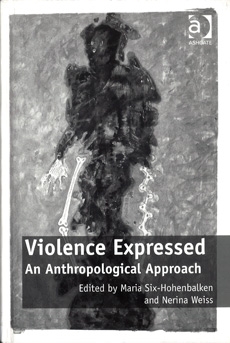Contents
List of Figures and Table / vii
Acknowledgements / ix
Notes on Contributors / xi
Introduction / 1
Nerina Weiss and Maria Six-Hohenbalken
Part I: Normalization and Aesthetics
1 The Utter Normalization of Violence:
Silence, Memory and Impunity among the Yup’ik People of Southwestern Alaska / 21
Linda Green
2 Warriors of Honour, Warriors of Faith:
Two Historical Male Role Models from South-Western Arabia / 37
Andre Gingrich
3 Public Events and the Japanese Self-Defense Forces:
Aesthetics, Ritual Density and the Normalization of Military Violence / 55
Eyal Ben-Ari
4 Aesthetics of Martyrdom:
The Celebration of Violent Death among the Liberation Tigers of Tamil Eelam / 71
0ivind Fuglerud
Part II: Discursive Strategies - Muted Language
5 When Soldiers Explain: Discursive Strategies Used by Israeli
Conscripts When Recounting Their Experiences in the Field / 91
Erella Grassiani
6 Tense Relations:
Dealing with Narratives of Violence in Eastern Turkey / 109
Nerina Weiss
7 Speaking Blood:
Metaphoric Expressions of Sexual Violence in a Guadeloupian Family / 129
Janine Klungel
8 Expressed, Muted and Silenced: Mestizo Childhood and Everyday
Violence in a Marginal Neighbourhood in Quito, Ecuador / 147
Esben Leifsen
Part III: Remembering and Aftermath
9 Silence, Denial and Confession about State Terror by the Argentine Military / 169
Antonius C.G.M. Robben
10 From Traumatic History to Embodied Memory:
A Methodological Challenge for Anthropologists / 187
Adelheid Pichler
11 ‘All Filmmaking is a Form of Therapy’:
Visualizing Memories of War Violence in the Animation Film Waltz with Bashir (2008) / 203
Michaela Schauble
12 Blurred Boundaries in World War I:
Strategies of Censorship, Denial and the Role of Witness Accounts / 223
Maria Six-Hohenbalken
Index / 247
List of Figures and Table
Figures
4.1 Children’s playground, LTTE-controlled Jaffna 1995. Source: Fuglerud / 79
4.2 LTTE cemetery, Kopai 1995. Source: Fuglerud / 79
Table
7.1 Isabelle’s ‘Intimate guide of women and young girls’ / 135
| 